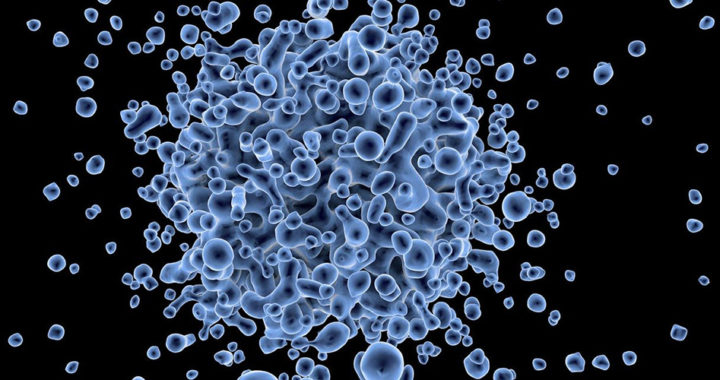There are two competing assumptions regarding the origins of viruses: either they evolved alongside primitive cells or early in the evolution of life, or they predated primitive life forms. Nonetheless, several hypotheses or theories have been built on these basic assumptions.
Where Did Viruses Come From? How Did They Emerge and Evolve?
Viruses are ancients. However, tracing their origins through conventional paleoethology is impossible because they do not form physical fossils. Most of them are smaller than the finest colloidal fragments of sedimentary rocks, thus making fossilization impossible.
The emerging field of paleovirology has provided a set of methodologies for studying the evolution of ancient viruses. Note that although they do not form physical fossils, some of them leave their genetic materials within the DNA of the hosts they infected.
Endogenous viral elements or EVEs are essentially viral fossils. Even the entire gene pool of humans contains traces of EVEs called Human Endogenous Retroviruses from viruses that infected the ancestors of modern humans. Genetic sequencing of modern viruses and hosts have helped draw and connect interrelationships between different groups, subfamilies, and families of viruses.
The Three Classical Hypotheses on the Origins of Viruses
1. Virus-First Hypothesis
One of the hypotheses on the origins of viruses is the virus-first hypothesis. This asserts that they arose from complex molecules of proteins and nucleic acids before cells appeared on earth. It argues that viruses predated primitive forms of life and contributed to the emergence of cellular life.
A considerable number of scientists have dismissed the virus-first hypotheses for the simplest reason that it violates one of the basic definitions or characteristics of a virus. Remember that a virus requires a host cell to replicate and evolve. Other also prefer more salient theories.
2. Regressive Hypothesis
Another hypothesis puts forward the idea that viruses may have once been small cells that became parasites of larger cells. This assumption is further supported by the discovery of giant viruses or giruses that have genetic materials similar to parasitic bacteria.
One of the main contentions against the regressive hypothesis of virus origin is that it fails to explain why even the smallest of cellular parasites do not resemble viruses in any way. Note that this hypothesis is also called the reduction hypothesis or degeneracy hypothesis.
3. Cellular Origin Hypothesis
There is also a notion that some viruses might have evolved from the DNA or RNA bits that escaped from the genes of larger organisms. Also known as the escape hypothesis and the vagrancy hypothesis, it also hypothesizes that the escape could have come from plasmids or transposons.
Note that plasmids are DNA that can move between cells. Transposons, on the other hand, are DNA bits that replicate and move within the genes of a cell. The problem with the cellular origin hypothesis is that it does not account for the structures that are unique to viruses.
Reconsideration and Reevaluation of The Three Classical Hypotheses
The current consensus about the origins of viruses centers on a general understanding that they are ancient and predated the divergence of life into the three domains. There are now two modern hypotheses that are under consideration. Below are the two modern hypotheses of the origins of viruses:
1. Coevolution Hypothesis
The coevolution hypothesis or the bubble theory presents a scenario before the emergence of life forms. Specifically, at the beginning of life, pieces of genetic information capable of self-replication called replicons existed alongside a food source like hot spring or hydrothermal vents.
Note that this food source also gave rise to lipid-like molecules that could self-assemble into vesicles that, in turn, could enclose or envelope replicons. Replicons close to the food source thrive, but those farther away from the source, they depended on resources inside the vesicles.
Henceforth, there were two paths of development for replicons due to evolutionary pressure. The first was merging with a vesicle, which eventually gave rise to cells, and The second involved entering the vesicle to use its resources until depletion, which gave rise to viruses.
2. Chimeric-Origin Hypothesis
A position paper by M. Krupovic, V. V. Dolja, and E. V. Koonin published in 2019 presented and proposed the chimeric-origin hypothesis. Note that this assertion was based on the analyses of the evolution of the replicative and structural modules of viruses.
It proposes a a chimeric scenario in which different types of primordial and selfish replicons resulted in the emergence of viruses by recruiting host proteins for virus formation. It also explains that the replication modules of viruses came from the primordial genetic pool.
The chimeric-origin hypothesis further asserts and explains that new groups of viruses have repeatedly emerged at all stages of the evolution of life. This emergence is further assumed to have occured through the displacement of ancestral structural and genome replication genes.
FURTHER READINGS AND REFERENCES
- Krupovic, M., Dolja, V. V., and Koonin, E. V. 2019. “Origin of Viruses: Primordial Replicators Recruiting Capsids from Hosts.” Nature Reviews Microbiology. 17: 449-458. DOI: 1038/s41579-019-0205-6
- Nasir, A., Kim, K. M., and Caetano-Anollés, G. 2012. “Viral Evolution: Primordial Cellular Origins and Late Adaptation to Parasitism.” Mobile Genetic Elements. 2(5): 247-252. DOI: 4161/mge.22797
- W, J. Mahy and Van Regenmortel, M. H. V. eds. 2009. Desk Encyclopedia of General Virology. Oxford: Academic Press. ISBN: 978-0-12-375146-1
